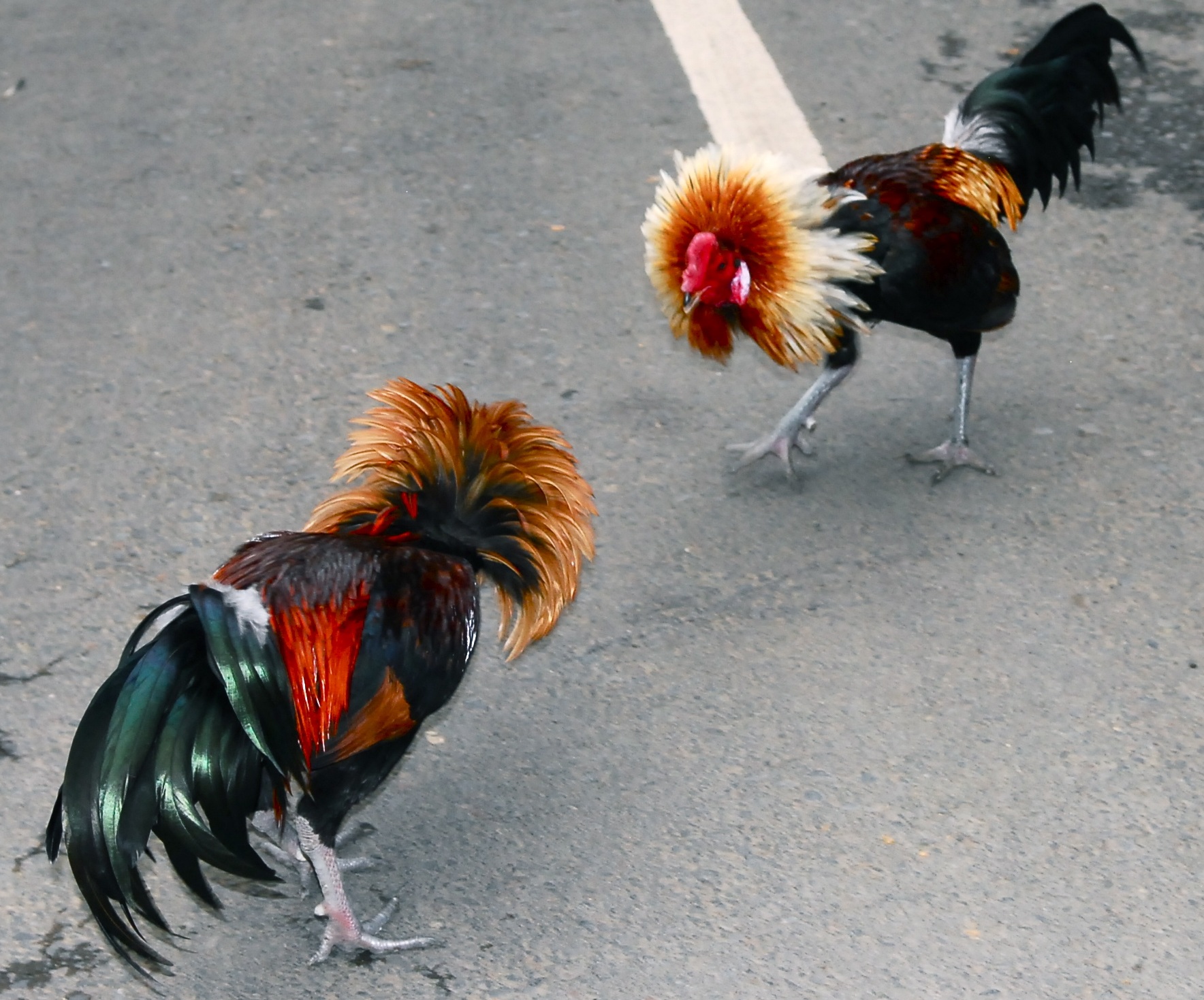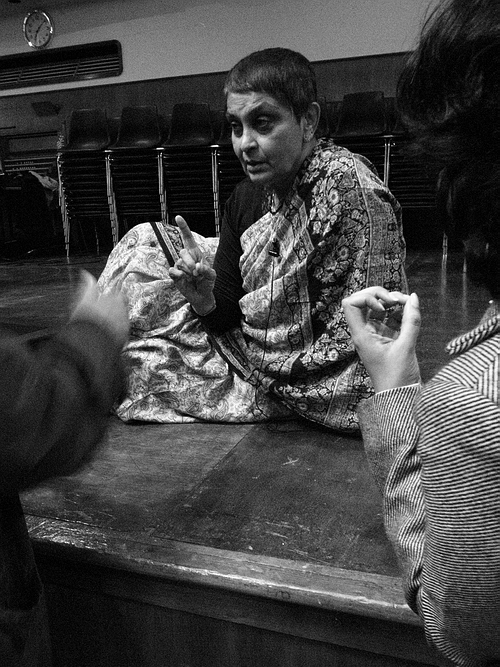The Misrepresentation of Culture
That desire which is in us all to better other people’s condition by having them think as we think.
"What is Man", Mark Twain
A few of us were sitting on a terrasse on a sunny-soon-to-be-cloudy day with the chance of meatballs… khm, khm, sorry, I meant rain. Yes, indeed I haven’t made a #dadjoke pun about a random film or cartoon in a while, so here it is. Relish it. Anyhoo, while enjoying the gentle breeze a few of us were talking about the usual arts people topics, such as living in the Netherlands as internationals, admiring its DIY healthcare system, and randomly talking about synaptic pruning and the power of behavioural patterns. Then one person raised a question about colonialism and linked it especially to the topic of people’s patterns of behaviour. The first part of the conversation took place around the possibility of changing how we think and do, with the hopes that by knowing now what colonialism did to the native civilizations we would’ve behaved differently and wouldn’t commit the same mistakes, which is for starters the first one, the deed itself – colonization. Discussing and dissecting to what extent we think a behaviour is influenced by the external factors, such as the environment and life-threatening issues, to the epigenetics and learned patterns of behaviour helped by the survival instincts, we got caught up in a gentle philosophical discussion. Just ‘intellectual’ enough to make you feel content that even though you drink that over-sweetened cold-Starbucks cappuccino from AH for 1,45 € like a real student (on rare occasions that I do it, I make sure to make a mental note in my mind: this is not environmentally friendly Leda!), you can still feel good about yourself because of these very conversations. The second part led to mentioning of the colonization of Mars or a similar endeavour, which seems to be perhaps a prospect of the future, which obviously led us to think that eventually we do not change our practices. Essentially, when humans learn that a certain way of thinking and doing functions and is beneficial to a noticeable extent, we will usually never let it go. The perks of being in the survival mode.
So, when talking about this topic on that terrasse I thought how this was a type of conversation that encompasses different fields of interest, not just a specific one that will help in concluding a final thought – as is usually the case with our talks anyhow. We were perhaps on the brink of starting a ‘thick description’ of human behaviour, which is an anthropological methodology or term for detailed explanation for the reason of human behaviour.
Assimilating your own perspective or idea on something pre-existing and tailored for the specific environment is an old practice of well, any kind of power relations and oppression, especially colonialism. But is there a different way of treating these ‘new encounters’ between people? Naturally, yes, but what’s more pressing then is the issue of to which extent are we capable of changing our habits of entitledness? How to break the pattern of thinking that something new is immediately perceived as conquerable and to be possessed of? How to treat ‘the other’ properly?
Even though anthropology is an arguably ambiguous study, one of the first traits that come to mind when thinking about it is ‘the exploration of the other culture’. One is supposed to do research, physically embark on a journey, and while living in a specific place for a while if such occurrence allows it, then try to understand the endemic culture of the place and its people. That is at least my understanding of anthropology. Existing at the crossroads of sociology, psychology, history, biology, archaeology, linguistic studies, art, and culture, it is the all-encompassing study of humanity.
It can also serve as a sort of cultural translation tool. One that tries to understand the vast array of unique and various cultures, create a bridge of explanation between people. Anthropology allows us to examine the totality of human being and human experience not just from the perspective of an ‘I’ or an individual, but also from the collective standpoint. It showcases the existing hyperbolic dialogue between the (social) group and an individual. Quite fittingly, as anthropology is not an easily defined study, but rather a concoction of numerous different ones, so is its role and meaning. Essentially, it is about creating a conversation between the ‘opposite’ sides, both literally (to converse on a daily level with the encountered culture/group of people if one is in a new environment especially) and on a symbolic level (‘the conversation’ between the different disciplines that make this study, ‘the conversation’ between the crucial ‘I’ and ‘The Group’ ego talk, also between the supposed opposite and even sometimes a hostile-seeming culture), as we are going to unravel in the next subchapter.
Of Cockfights and Men
To provide an example of exploring a culture and ‘the other’ in a respectful way, I want to suggest an anthropological essay titled Deep Play: Notes on the Balinese Cockfight written by noted American anthropologist Clifford Geertz as proof. It starts with a description of his and his wife’s accommodation in a Balinese village. At first, without imposing themselves, they were disregarded as existing entities, but after a sort of fateful incident that was sponsored by illegal cockfights – crucial to the Balinese culture, everything changed for them. A police raid and the ensuing chaos fast-tracked Geertz and his wife into the midst of Balinese culture and people, together they took shelter from the police. That day Balinese men and two white US academics became something more than just a stranger and an observer. After a few weeks and this sudden inclusion into the Balinese village and its initially unresponsive and ‘away’ people, they were introduced into the usually elite inner circle of Balinese illegal cockfights goers.
There are many rules and customs to these cockfights, especially when compared to the British ones. The cockfights do not serve the same purpose necessarily. Some of the rules of this event are that the cocks are especially taken care of, groomed even, since the owners indulge in a fantasy of personification with the cocks. Afterwards, the bets are put out and the fun can begin. The men that are allowed to bet are almost never betting against a cock owned by a member of their own kingroup. Loyalty and comradeship between different kins are closely connected to the betting system. Especially as this village is dominated by four large patrilineal, partly endogamous descent groups that are constantly pitted and vying against each other.

Identification of men with the cocks
The audience and the cock caretakers personify themselves with their cocks. I won’t turn a blind eye to the linguistic and symbolic coincidence. The cocks are literally the extensions and representations of men here, in both senses as part of their identity. The men get to play out a part of themselves that is not usually displayed in real life. Balinese people are described as reserved, cold, composed, even partly present or as mentioned in the text as being ‘away’. They despise any form of loose emotion and passionate display of feelings. Along with a few other heavily punished transgressions, what is mind-boggling is that bestiality is punishable by death, even though this occurrence of the ‘cock personification’ is right one the verge of that. On the other hand, through these cockfights that happen periodically, they exercise their full spectrum of human emotions and experience.[1] The played-out aggression between the cocks (mis)represents the abstract hatred, the concept of masculinity and other traits of them that are otherwise suppressed in daily life.
[1] The events that signify the flow of time in a more episodic manner. In most Western civilizations people consider time as the linear flow in which we have the tenses of past, present and future, and usually through which our events happen, and through which we grow. But, as observed by Geertz, in the Balinese culture their flow of time is realized through the periods ‘when nothing happens’ and ‘when suddenly everything is alive and active’, in this case that ‘life/alive event’ is a cockfight.


Cockfights as a meta-social commentary on themselves
To my surprise, and what Geertz notes in the end, is that these cockfights can be seen as a sort of representation, a sort of mimesis of the people, specifically the men. I indeed thought of a different kind of representation. I misrepresented it in my head as a type of play where the men learn about themselves and change themselves and their society little by little, cockfight by cockfight. But their representation is different. It is not about the change, because at the end of the fight nothing really changes. Except for the loss of money as the bets get determined, no one transforms themselves into something different now. Their social status does not change, or even their financial one. This is a fun display of themselves, but ultimately nothing of the more abstract thought.
Sentimental education
As the cockfights are held for fun, they are a play for and on the Balinese men, they also serve as a mirror. Through the whole excitement of the play, the preparations for it and the energy and emotions running high, the Balinese learn about their own emotions – so rarely displayed in general. Learning about the individual and their community is what develops the sensibility of each one participating in this event. A cock is a figurative mirror to the men, but again, only to see themselves and not to actually apply it in their real life.
In the cockfight, then, the Balinese forms and discovers his temperament and his society’s temper at the same time. – Clifford Geertz
And what is this ‘other’ I keep on repeating and referring to as a special term or concept?

Gayatri Chakravorty Spivak, a university professor and philosopher, speaks of creating a space for the others to speak, a specific group of marginalized others to speak themselves, instead of giving them the voice to speak. It’s about the power that the others hold within themselves and not about the power that the ‘currently powerful ones’ seemingly possess. These specific marginalized groups of ‘other’ people cannot speak, not because they are incapable due to any lacking of their own, it is more so that their own knowledge and skill is not recognised as equal, it lacks the deserved place in the conversation on a global scale. That is why when mentioning ‘the other’ in the context of representation of culture in the case of the Balinese and its cockfights, I am referring to the notion of unintentionally alienating and wrongly categorizing an already distant concept, or in this case a culture. The issue with it is not the fact that a certain custom, or people or culture seem foreign and can be experienced as simultaneously enticing and daunting, but that it can be easily assigned a meaning that it does not hold. When simply placing a specific culture into an already established category that we as people of one side have decided that it fits, no matter how unapplicable it is in this situation for example, we are assigning ourselves the power which we should not exactly hold in the first place.
To conclude, a culture of a society can be looked at as if it were a complex and ever-changing organism containing other smaller units which is being taken apart and put together by an anthropologist in hopes to (re)present it as correctly to the other people as possible. And as Geertz himself said it: ‘Societies, like lives, contain their own interpretations. One has only to learn how to gain access to them.’
Designed by: Nina Gueorguieva
Do you want to double-check the information you just received? Here are the sources the writer used.
Maggio, J. “‘Can the Subaltern Be Heard?’: Political Theory, Translation, Representation, and Gayatri Chakravorty Spivak.” Alternatives: Global, Local, Political 32, no. 4 (2007): 419–43. http://www.jstor.org/stable/40645229.
https://scholarblogs.emory.edu/postcolonialstufdies/2014/06/19/spivak-gayatri-chakravorty/
Geertz, Clifford. “Deep Play: Notes on the Balinese Cockfight.” Daedalus 134, no. 4 (2005): 56–86. http://www.jstor.org/stable/20028014.